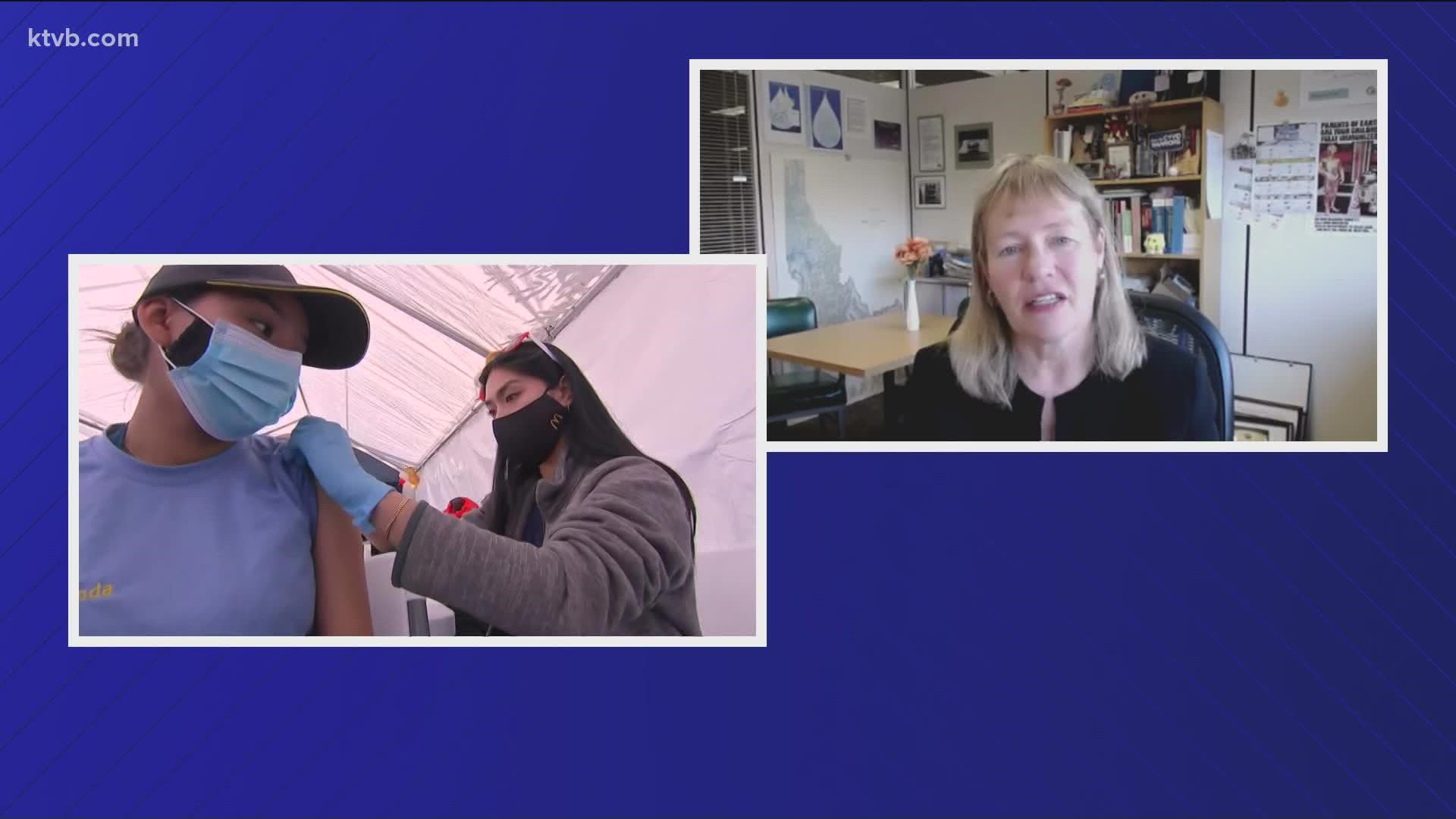BOISE, Idaho — This Sunday marks the second anniversary of COVID-19 in Idaho.
On March 13, 2020, the state reported our first two cases of Coronavirus. Two weeks later Governor Brad Little issued a statewide "Stay Home" order.
We've gone through a lot and lost a lot of good people, but have also made a lot of progress in the fight since then.
Here are some of the key numbers as of Thursday:
- Since March 13 of 2020, the state of Idaho has reported more than 437,000 cases of coronavirus.
- More than 4,800 Idahoans have died of COVID-related illness.
- More than 926,000 Idahoans five years and older are now fully vaccinated. That's 54% of the eligible population. They have received two doses of the Moderna or Pfizer vaccine, or one dose of the Janssen vaccine.
- The percentage of eligible Idahoans 12 and older who have also received a booster shot sits at 44%. Current numbers are trending downward.
- The state reports 136 people hospitalized with confirmed or suspected COVID statewide. That is down from the peak of 793 in September.
- The percentage of COVID tests coming back positive has fallen to 3.7%. That is down from the Omicron surge peak of 38% in February of this year.
State Epidemiologist Dr. Christine Hahn discusses the challenges of the early days of the pandemic, where we stand now, and the outlook moving forward.
Below is an excerpt.
Dr. Christine Hahn: "You can't respond to something that you can't measure or test for, and that was a huge setback. We always thought we'd have tests, either already available if this was flu, or quickly developed, and the delay in testing was a big setback. Our state lab really set up quickly the ability to do testing, but we were hopeful that we would have tests right on hand, that we'd be able to educate the public about how to avoid the virus. We thought we'd have clear guidance on masking. We were hopeful for a vaccine, which actually came a lot quicker than we did expect, but in the beginning we didn't have that, so it was a very, very difficult time in the beginning."
Doug Petcash: We saw Omicron spike so high, so quickly and then drop off so quickly, and governments have loosened restrictions, removed mask mandates. Is the feeling going into spring and summer positive in that it's ok for those restrictions to have been loosened?
Dr. Christine Hahn: "Yeah, I really do. Throughout the state those good numbers that you presented earlier of cases dropping, percent of tests that are positive dropping dramatically, that's really being seen throughout the state. So I am very comfortable that we are now saying to people follow the CDC guidelines if you're in a low-risk County or a medium-risk county, most people should be comfortable going around without a mask, doing your normal activities. It feels good to do that. On the flip side, I want to respect and hope that people feel comfortable if they still want to wear a mask when they go into a crowded public space or a grocery store or anywhere to continue to wear a mask."
Dr. Hahn says the Omicron variant is still the dominant variant across the country. They are watching a sub-variant of Omicron at this time, but don't know yet how contagious or dangerous it might be.
Watch More 'Viewpoint':
See every episode in our YouTube playlist:

